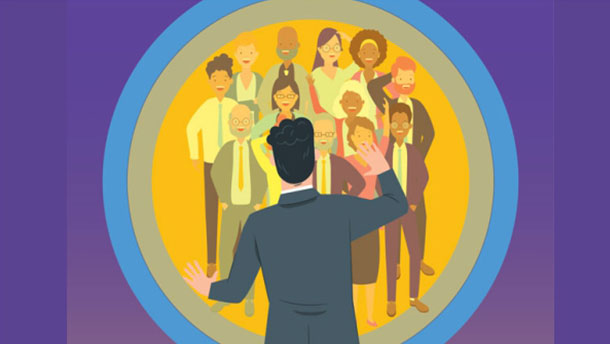
Managing a multigenerational team can be a complex task for any leader. As a manager, recognising how to motivate team members individually and capitalise on their strengths is essential. Understanding attitudinal and behavioural differences among team members of different generations is a critical tool for driving engagement.
Managing a multigenerational team can be a complex task for any leader. Each generation has its unique mindset, work style, and ways of communication. As a manager, recognising how to motivate team members individually and capitalise on their strengths is essential. Understanding attitudinal and behavioural differences among team members of different generations is a critical tool for driving engagement.
According to a Dale Carnegie employee engagement study, middle-aged employees (40 to 49 years) are less engaged with their organisation. This may be due to external pressures such as family life or the feeling that they have reached a plateau in their career. There are several things managers should keep in mind to ensure that all team members feel valued and motivated.
Different generations in today’s workforce
Baby Boomers (born between 1945 and 1960): Many of the Baby Boomers are nearing retirement age. In some cases, their retirement has been put off due to the global economic crises.
Generation X (born between 1960 and 1980): Generation X, when they entered the job market, were confronted with new terms like downsizing and outsourcing. They tend to be skeptical towards authority and are cautious in their commitments.
Generation Y or millennials (born between 1980 and 2000): This generation grew up with technology. They are the employees most familiar with technology changes and multitasking. Extensive use of social media is one of the significant differences between millennials and the older generations. Coming of age during a shift in values, they are attracted to organisations whose missions speak to a purpose greater than a bottom line. Millennials are motivated by opportunities to learn and develop. In general, family, and work-life balance are important to them.
Gen Z (born between 1997 and 2010): As Gen Z workers enter the workforce, expect to see innovation climb on a global scale. As a group, Gen Z is more entrepreneurial, diversified, technologically savvy, and individualistic than the prior generations.
Like the millennials before them, Gen Z employees treasure work-life balance and take care of their mental health in a way the Baby Boomers never learned to do.
It is worth noting that, contrary to popular belief, organisations are not getting younger, even with the influx of younger generations into the workforce. In the episode Diversity with Dale | Ep. 5: Leading Multi-Generational Workforces Using Agility and Innovation, it was discovered that post-pandemic scenario organisations are not actually getting younger.
It is important to recognise that some generations may value more traditional work structures, such as face-to-face interactions and office-based work. However, hybrid work culture has emerged as the new norm, especially after the pandemic forced organisations to implement remote work policies. This model combines both in-person and remote work, allowing employees to work from home or the office, depending on their needs and preferences. This type of work culture can be an ideal solution for organisations dealing with a multi-generational workforce.
On the one hand, younger generations may prefer the flexibility and freedom that remote work provides, as they are more comfortable with technology and virtual communication. On the other hand, older generations may appreciate the opportunity to connect with colleagues face-to-face, especially for training or mentoring purposes.
Additionally, hybrid work culture can provide many benefits to organisations, including increased productivity, reduced office costs, and improved work-life balance for employees. With the right tools and technology, employees can collaborate seamlessly, regardless of their location, and managers can monitor and track progress effectively.
It is essential to ensure that all employees have access to the necessary resources and support to work remotely successfully. It is also important to set clear expectations and guidelines for communication and collaboration to avoid misunderstandings and miscommunication.
Log In or become an AIMA member to read more articles
